Virtual and augmented reality have officially landed in the enterprise. Simulated experiences are becoming a regular part of daily operations in many B2B and B2C businesses as they work to modernize buying and selling environments.
So what does that mean for your business?
In this article we’ll take a look at how assisted, virtual, mixed, extended, and augmented reality solutions serve different industries to help you narrow down which technology can make the most impact on your organization.
But first, let’s try to make sense of the alphabet soup that is XR, aR, VR, AR, and MR:
The difference between extended reality technologies
Although extended reality, or XR, is the newest term on the block, it makes sense to start with that, since XR encompasses all the other technologies discussed here. A superset that covers the entire spectrum of the real and the virtual, XR is a rapidly growing field in the world of business, entertainment, and remote work.
Here’s a breakdown of the four main subcategories that make up extended reality:
Assisted reality technology (aR)
Assisted reality refers to the display of information in the field of view of a user, to help them perform a particular task.
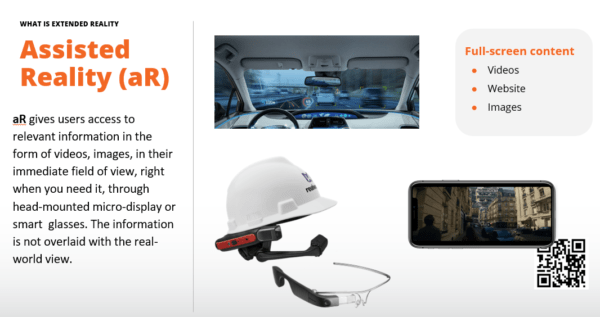
A well-known example is the Heads-Up Display (HUD) used in cars to show the speed and speed limit to the driver.
Other examples are head-mounted micro-displays like the Google Glass.
Virtual reality technology (VR)
Virtual reality technology lets you, a real object, enter and interact with a virtual or created space.
You could say virtual reality is where it all began, although its exact origins are hard to pinpoint. Although the term is now most often used in the context of virtual reality headsets like the Oculus Quest or the HTC Vive, it is actually an evolution of far older technologies.
Elements of virtual reality first appeared more than a century ago in the form of stereoscopes that would use pairs of images to enable depth perception. It wasn’t until the 70s that virtual reality found high-level applications in things like flight simulation and military training (source).
In the 2010s, virtual reality technologies evolved to the point that they attracted widespread interest from investors and the public in general.
There are still drawbacks of VR— complete virtual environments are complicated and expensive to create and some people are prone to sickness when wearing a VR headset— but the technology has come a long way.
VR headsets are viable not just for entertainment, but also for business use cases like employee training and prototyping product development.
Augmented reality technology (AR)
The inverse of virtual reality, augmented reality technology allows you to bring virtual objects into real space. Augmented reality technology is all about blending real-world environments with virtual ones, sometimes across multiple senses, such as touch and sound. The virtual sensory information is overlaid onto the real environment to enhance it. This is typically done by way of an augmented reality headset or mobile devices like smartphones and tablets, as shown in this example:
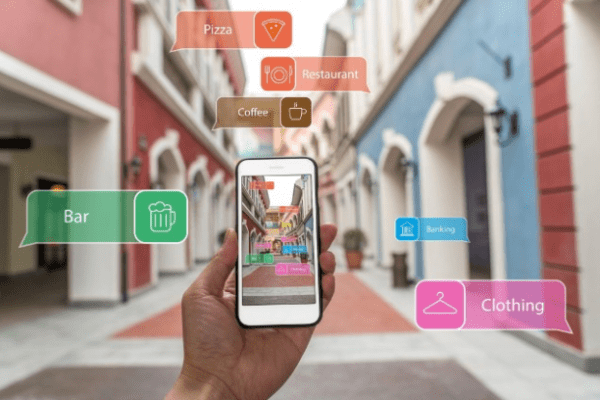
The gaming industry has adopted the technology. The most famous example is the enormously popular hit, Pokémon Go. AR has also shown great promise for facilitating social interaction, emergency search and rescue operations, and employee training in the manufacturing and life sciences spaces.
Mixed reality technology (MR)
Mixed reality is a blend of both AR and VR, in which physical and virtual objects and environments coexist, allowing the user to interact with both of them in real-time. MR is sometimes alternatively referred to as hybrid reality.
Mixed reality leverages several technologies and takes many different forms. Today’s MR devices come in the form of head-mounted systems or mobile devices equipped with cameras, sensors, and other more specialized hardware.
By combining the unique benefits of both AR and VR, mixed reality is arguably the future of extended reality. For example, Microsoft’s HoloLens allows users to add 3D assets known as holograms into real-world environments, which they can interact with much like they would if they were physical objects.
Mixed reality also allows developers to take advantage of the power of VR to design experiences that replicate the real world and combine that with AR technology that recognizes the real world in order to create tools that help users complete real tasks in the real world. For example, imagine using a tool to help you to understand how a new product that your company has just launched works and then being able to show your customers how that can work in their physical system. That's something that MR really excels at— and something that is not possible with VR alone.
Many companies have been working on mixed reality by adding objects into a virtual world. You may have seen this with demonstrations mechanics working on an engine where they can have a supervisor participate in the repair.
However, the real benefit of mixed reality will be where we can involve people in the process. Imagine a sales coaching exercise where a salesperson can practice selling their new product to a set of buyers (delivered in VR) where they experience a simulated human interaction and practice their product knowledge by seeing how they are being perceived by the customer and then allowing them to bring the product into their physical space with an AR object so they can physically see and interact with that object.
With mixed reality, businesses can embrace their remote workforce while ensuring that they are better prepared for their engagements without the costs and latency in traditional more face-to-face training programs.
Practical applications of VR, AR, MR, and XR in business
When the first commercially available VR headsets hit the market around a decade ago, they were primarily sold as gaming devices. Although the entertainment sector was quick to capitalize on the technology, the sector has seen enormous growth on account of its many potential business applications. Today, more and more industries are investing in virtual and augmented reality technology for a myriad of purposes from medical training to remote work to digital twinning.
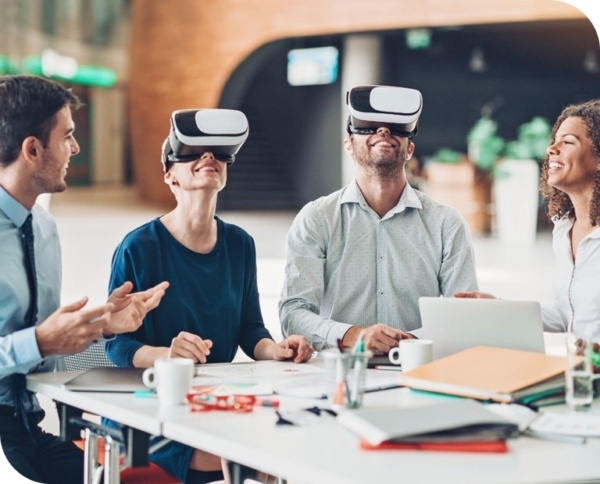
Here are some examples of how virtual, mixed, and augmented reality solutions can be used in business:
VR, AR, and MR in Manufacturing
In production-driven industries like energy and manufacturing, virtual reality allows every characteristic of a machine, product, or component, to be simulated and tested in a safe and secure environment where any changes can be undone.
Manufacturing firms can enjoy enormous savings by even going so far as to create entire replicas of their shop floors and all the machinery in them. These so-called digital twins assist in a huge number of processes, such as research and development, operations management, and maintenance.
For example, major aerospace companies like Boeing and Airbus now use virtual reality to design new aircraft to deliver enhanced performance, safety, and passenger experiences. All the while, such initiatives dramatically reduce costs and minimize the time to market throughout the manufacturing and testing stages.
See also: Augmented reality in manufacturing has become serious business
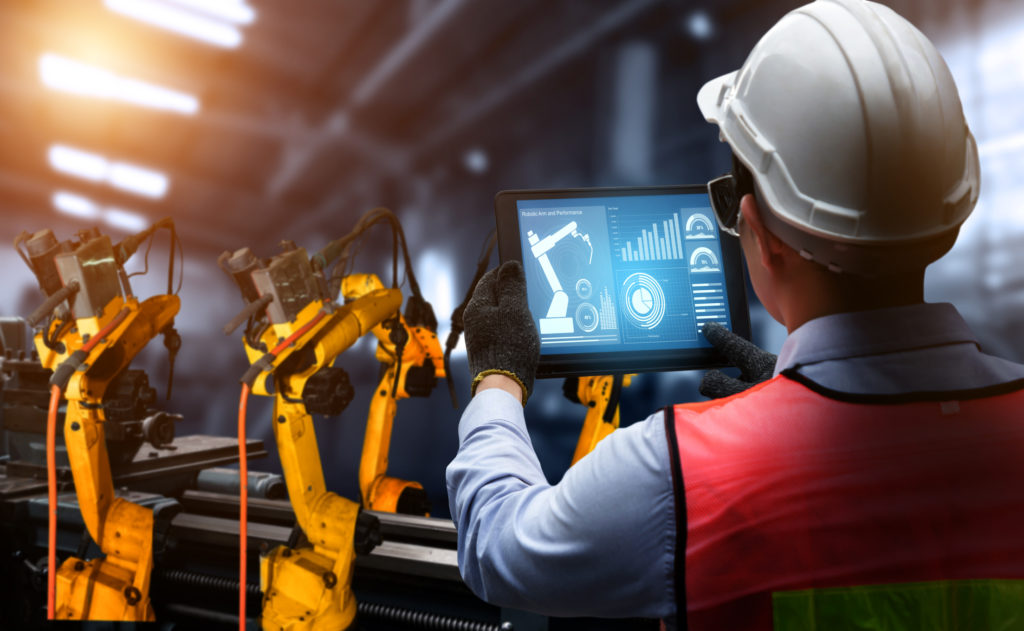
There are also many applications of augmented reality technology in manufacturing. Many shop floors are equipped with dangerous machinery, so employees need to be properly trained before they can use them safely, like in this example of an AR training video from Vidinoti, a Bigtincan company.
By providing real-time information and instructional content by way of a heads-up display, AR can help create safer environments for trainees. AR can also help keep workers informed, in real time, about environmental characteristics, such as radiation levels in nuclear power stations or air quality in other hazardous environments.
Mixed reality tools like Bigtincan XR are also helpful for sales reps in any industry, like energy and manufacturing, that have large products that can’t be physically shown to customers. Using XR technology, sellers can render interactive 3D models to virtually showcase products in real-time to demo them or even just to help customers see where larger products will fit in their desired locations.
VR, AR, and MR in Retail
A few years ago, the extended reality was rarely talked about in the context of sales enablement in the retail sector. Today, however, virtual and augmented reality present many exciting new ways for brands to present to and engage with their customers. VR and AR can become useful sources of information in their own right, simply by providing fresh insights into the way customers interact with your products and services.
While VR isn’t likely to replace the physical showroom or retail store in the foreseeable future, there’s no denying that customers are leading more digitally-driven lives. Instead of visiting a showroom in person, for example, they can explore your presentations in virtual environments from the comfort of their homes and offices – even to the point of interacting directly with your sales representatives.
The augmented and virtual reality buying experience truly is like no other. For example, IKEA recently created high-definition interactive virtual showrooms where customers can explore the furniture giant’s products via VR headsets.
AR and VR have applications throughout the highly diverse retail sector. For fashion products, customers can see how they look in certain items of clothing by trying them on in augmented or virtual reality environments. Retail associates can utilize AR and MR to plan and test merchandising in brick and mortar stores, like in this demonstration of Bigtincan XR at NRF 2022:
In automotive sales, AR experiences allow shoppers to go into showrooms in person and customize vehicles with different styles or colors using their phones. Even general stores like supermarkets and hypermarkets can leverage AR and VR to deliver more personalized and user-centric shopping experiences.
VR, AR, and MR in Medicine and the Life Sciences
Just as engineers in the manufacturing sector can use extended reality solutions to garner a clearer understanding of complex technical problems, so too can medical experts and others in the life sciences space. For example, VR can help optimize production in situations where quality control is paramount, such as the manufacturing of drugs and medical equipment. By simulating multiple ‘what if’ scenarios in a safe virtual environment, research and development teams can reduce their reliance on human testing and, in doing so, reduce the risk of adverse effects.
See also: How medtech reps use sales enablement to engage with HCPs
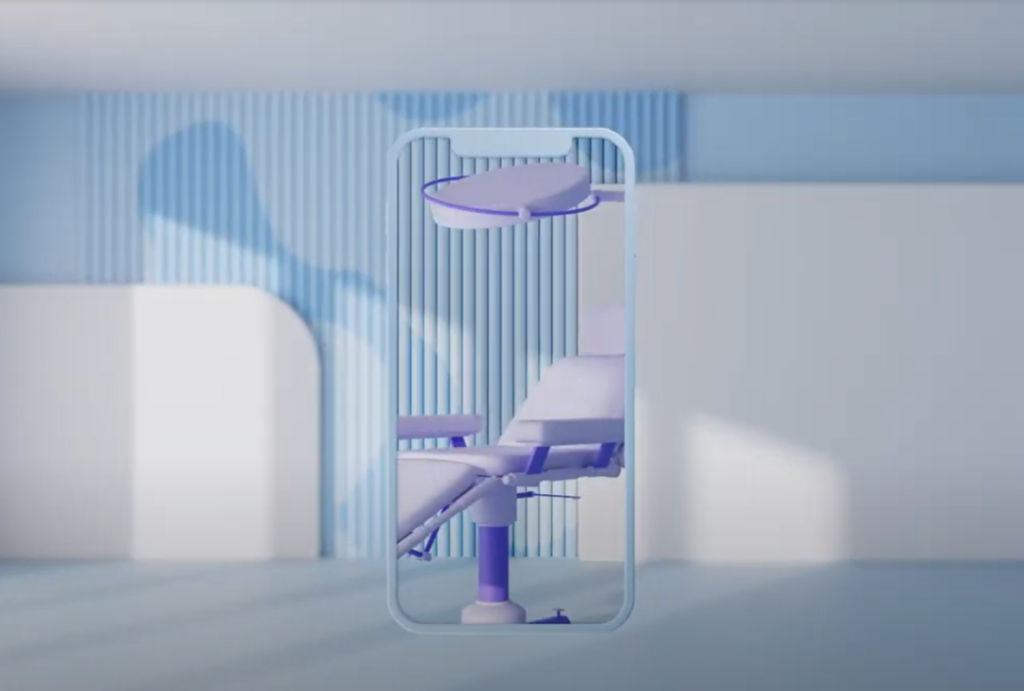
Medical training is currently the most widely adopted use case for extended reality in the life sciences sector. AR systems, for example, can offer real-time instruction to trainee surgeons, thereby reducing the risk of making mistakes that could be detrimental to a patient’s health. VR goes even further by making it possible for future medical practitioners to train in an entirely risk-free environment by operating on virtual patients.
AR and VR is also set to revolutionize the rapidly growing telemedicine sector by enhancing patient experiences in the provision of remote healthcare. For example, medical practitioners can train remotely using mixed reality headsets, while emergency responders can be guided through complex medical procedures that they may not otherwise be adequately equipped to handle by themselves.
VR and AR have also been used to help treat mental health conditions, rehabilitate people suffering from brain injuries, and assist people with low vision or blindness.
Final words
Enterprise-grade extended reality solutions might be fairly new to the market, but they are already making a significant impact. Beyond the initial hype lies the enormous potential of augmented and virtual reality to achieve what, for decades, belonged largely to the realms of science fiction. From delivering highly engaging and personalized customer experiences to immersive employee training and medical advancements, VR, AR, MR, and XR are set to become driving forces of professional (and personal) transformation over the next decade.

